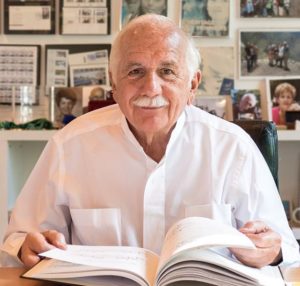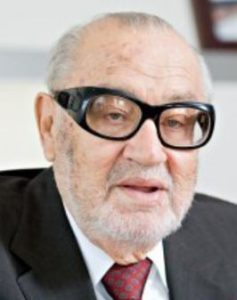Second Israeli in Space
 Eytan Meir Stibbe (b. 1958) was born in Haifa to Jewish parents who had made aliyah from the Netherlands. He grew up partly in the United States. Stibbe joined the Israeli Air Force and became an F-16 fighter pilot. He served under the command of Ilan Ramon, who would go on to become Israel’s first astronaut. Stibbe served with distinction, and once tied a record by shooting down four enemy aircraft in a single battle over Lebanon in 1982. In another mission, he downed a total of five Syrian aircraft! Stibbe was awarded the Distinguished Service Medal, and went on to teach at the IAF Flight Academy. Altogether, he served with the Israeli Air Force for some 43 years. Meanwhile, in 1984 he joined Israel Aircraft Industries to help modify and improve Israel’s own Lavi fighter jet. The following year, he co-founded Elar, a new Israeli military tech developer. When he left the company in 2011 and sold all of his shares, he had become a millionaire. Stibbe then turned his attention to his new Vital Capital Fund, which invests specifically in projects designed to alleviate poverty and clean up the environment. The Fund has helped bring sanitation, electricity, and healthcare to millions of people around the world, and has won numerous awards for its philanthropic work. Stibbe has always dreamed of following his mentor Ilan Ramon to space. He purchased a $55 million ticket on board a SpaceX craft, in collaboration with Axiom Space, which took off on April 8th for a ten-day mission. This is the first ever privately-funded human mission to space, and Stibbe is now only the second Israeli ever to go to space. He is not only a passenger, but also doing important scientific work, carrying out a total of 35 experiments, including on space radiation, optics, and quantum communications. Because of several delays, the Rakia mission (from the Biblical Hebrew word for outer space) ended up overlapping with Passover. And so, Stibbe took with him a Pesach seder kit prepared by Chabad, with shmurah matzah and four mini-cartons of grape juice (wine is prohibited on the ISS!) The return trip has also been delayed due to poor weather, and is expected to finally return to Earth this Sunday.
Eytan Meir Stibbe (b. 1958) was born in Haifa to Jewish parents who had made aliyah from the Netherlands. He grew up partly in the United States. Stibbe joined the Israeli Air Force and became an F-16 fighter pilot. He served under the command of Ilan Ramon, who would go on to become Israel’s first astronaut. Stibbe served with distinction, and once tied a record by shooting down four enemy aircraft in a single battle over Lebanon in 1982. In another mission, he downed a total of five Syrian aircraft! Stibbe was awarded the Distinguished Service Medal, and went on to teach at the IAF Flight Academy. Altogether, he served with the Israeli Air Force for some 43 years. Meanwhile, in 1984 he joined Israel Aircraft Industries to help modify and improve Israel’s own Lavi fighter jet. The following year, he co-founded Elar, a new Israeli military tech developer. When he left the company in 2011 and sold all of his shares, he had become a millionaire. Stibbe then turned his attention to his new Vital Capital Fund, which invests specifically in projects designed to alleviate poverty and clean up the environment. The Fund has helped bring sanitation, electricity, and healthcare to millions of people around the world, and has won numerous awards for its philanthropic work. Stibbe has always dreamed of following his mentor Ilan Ramon to space. He purchased a $55 million ticket on board a SpaceX craft, in collaboration with Axiom Space, which took off on April 8th for a ten-day mission. This is the first ever privately-funded human mission to space, and Stibbe is now only the second Israeli ever to go to space. He is not only a passenger, but also doing important scientific work, carrying out a total of 35 experiments, including on space radiation, optics, and quantum communications. Because of several delays, the Rakia mission (from the Biblical Hebrew word for outer space) ended up overlapping with Passover. And so, Stibbe took with him a Pesach seder kit prepared by Chabad, with shmurah matzah and four mini-cartons of grape juice (wine is prohibited on the ISS!) The return trip has also been delayed due to poor weather, and is expected to finally return to Earth this Sunday.
Passover: Fighting for Freedom
Words of the Week
Moses spoke not about freedom but about education. He fixed his vision not on the immediate but on the distant future, and not on adults but children. In so doing he was making a fundamental point: It may be hard to escape from tyranny but it is harder still to build and sustain a free society. In the long run there is only one way of doing so – to defend a country you need an army, but to defend a civilization you need education.
– Rabbi Jonathan Sacks



